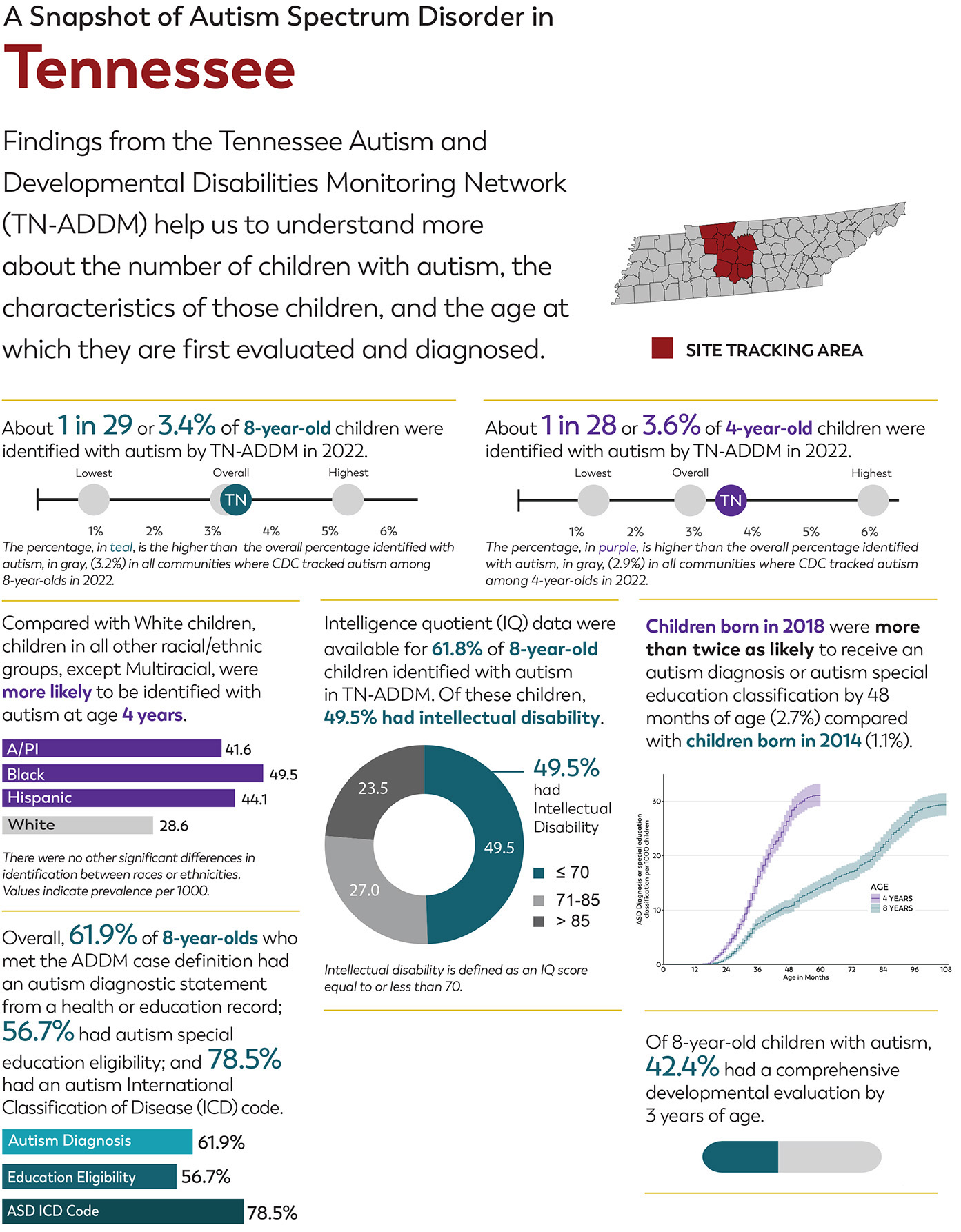Autism Spectrum Disorder in Tennessee
The Centers for Disease Control and Prevention (CDC) announced on 4/17/25 that the estimated prevalence of children in the U.S. with autism spectrum disorder (ASD) has again increased.
Principal investigators from the Vanderbilt Kennedy Center's (VKC) Treatment and Research Institute for Autism Spectrum Disorders (TRIAD) continue to lead tracking in Tennessee through a grant from the CDC’s Autism and Developmental Disabilities Monitoring (ADDM) Network.
Tennessee is one of 14 participating states.
What We Learned in Tennessee |
|---|
| There are many children living with autism who need services and support. The estimated number of 8-year-old children identified with autism in the area covered by TN-ADDM increased from 2.8% (1 in 36) in 2020 to 3.4% (1 in 29) in 2022. |
| Although an increasing number of young children with autism are being identified by 4-years of age, many children are still not receiving comprehensive evaluations at young ages (42% of 8-year-olds received a comprehensive evaluation before 3 years of age). |
| In TN-ADDM, more Asian or Pacific Islander, Black, and Hispanic children who were age 4 were identified with autism compared with White children. |
For more details on how this information was collected, frequently asked questions, and how this information can be useful to families and providers, see here.
To view the community report, see here.

How TRIAD addresses the needs of Tennessee children with ASD and their families
Sign up for free newsletters and learn about TRIAD services, live trainings, basic online trainings and professional development opportunities for educators, service providers, and caregivers.
Subscribe here